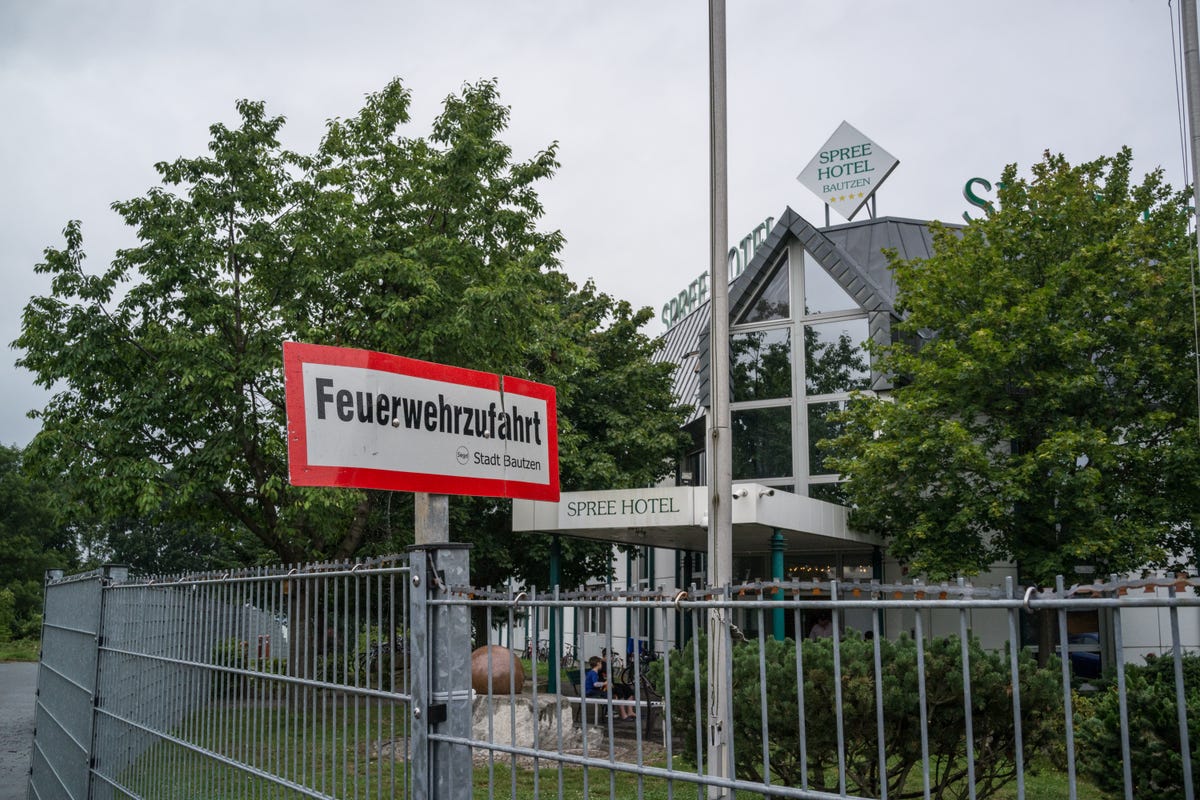Inside Germany's repurposed buildings that house refugees (pictures)
Barracks, airport hangars, a former town hall and a four-star hotel all play a role in sheltering refugees.

The Spree Hotel outside Dresden was once a popular vacation resort. Now it plays hoststo recently arrived refugees.
Accommodations vary widely across Germany's refugee shelters. Refugees in the Spree share rooms with just one other person. They even have en suite bathrooms -- a rarity.
These Pakistani men arrived in Germany without their families. They initially were assigned to a dorm-style room, and decided to stay when when twin rooms became available.
This room inside the Spree is packed with donated items that refugees have access too. Most arrive in Germany with few possessions or clothing.
Any resident can use the Spree's kitchen.
One resident is employed in the laundry to make sure the machines are used correctly.
The hotel's sauna has been repurposed as an area to dry wet laundry.
The Spree Hotel was one of the first facilities in the area repurposed for refugee housing. Owner Peter Rausch had to install special glass in case violent protestors tossed Molotov cocktails.
The Bayern Kaserne refugee reception center, outside Munich, offers a friendly face to migrants.
The center's 100 volunteers work in shifts to welcome newly arrived refugees, chat with residents and dispense tea and coffee.
There are still signs of Bayern Kaserne's previous role as a military barracks.
Potsdam's Freiland Youth Cultural Center -- home to the city's counter-culture movement and artists -- now welcomes refugees, too
This building now serves as an internet cafe specifically for refugees.
These buses on the grounds of the Freiland Youth Cultural Center in Potsdam will become pop-up educational and play facilities for refugee children.
German aid organization Arbeiter-Samariter-Bund (ABS) converted a former town hall in Berlin's Wilmersdorf district into a refugee center.
Children play in the courtyard of the ABS Wilmersdorf refugee center, in Berlin.
ASB Wilmersdorf has a ground-floor computer room equipped with Google-donated Chromebooks. The computers are used primarily by children.
Like kids everywhere, children living in refugee centers are happy to turn a wall into a work of art.
This Lichtenberg office building in eastern Berlin now houses refugees on an almost semi-permanent basis, as it's so hard to find suitable accommodation.
Charity blu:bloks hosts dance classes for young girls living in the Lichtenberg shelter.
Once the lifeline for Berliners during the Berlin airlift, Tempelhof Airport is now one of Germany's largest refugee centers.
Tempelhof's hangars now have pods that can accomodate up to eight refugees. There are safe spaces for children to play, a gym, a coffee shop, an education center and, soon, a computer room.
Tempelhof's communal areas can be quiet during the day and packed at night as residents charge their phones.

